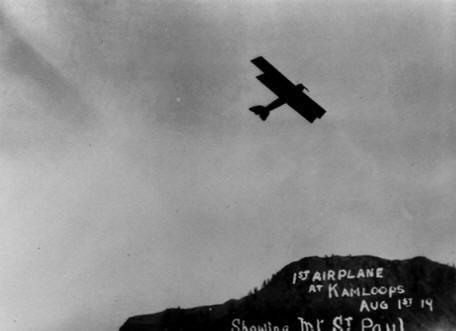
Captain
Ernest O. Hall flew the first aircraft to land at
Kamloops on August 1st, 1919. Arriving from
Merritt, he gave a �stunting� demonstration and later
took up paying passengers for local tours from the old
polo grounds east of the city. One of them was
Chief
Eli LaRue of the Saint Paul Reserve, who would go on
record as the first indigenous person to fly in BC.
|
Kamloops Airport
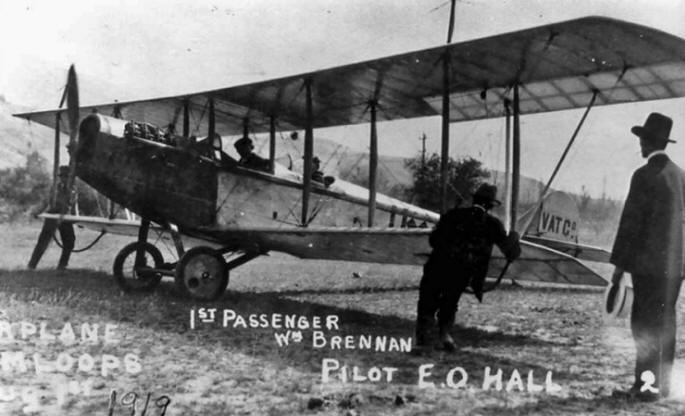 |
|
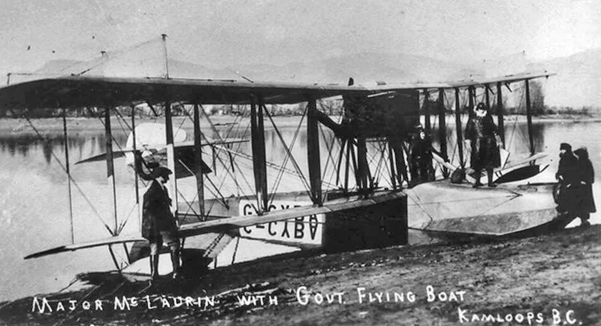
. |
The next aircraft arrived on
the river in October 1920, a Curtiss HS-2L flown by
Major McLaurin on an aerial survey of Kamloops Forest
District.
Return to
map |
|
Other RCAF float equipped
aircraft like this Fairchild FC-2W arrived over the
following years to continue surveying and forestry
patrol duties. By 1928, however, the Kamloops Board of
Trade had recognized the need for a land based facility
and began searching for an appropriate site.
|
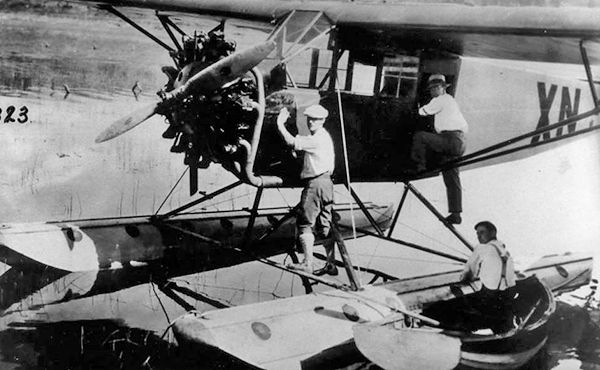
. |
|
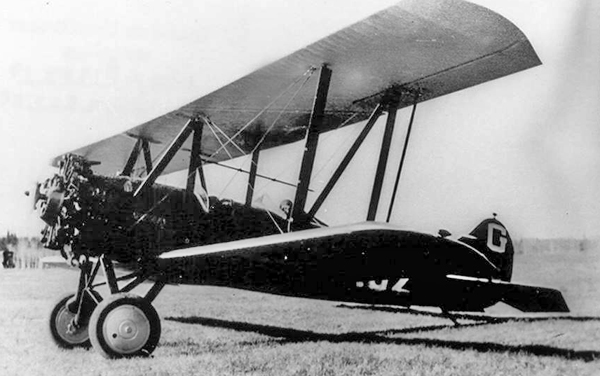
.
|
In
September of that year, a Yukon Airways Eaglerock en
route to Whitehorse landed at the St. Paul Reserve. The
idea seems to have stuck; in June of 1929, the Band
agreed to allow the Kamloops Air Club to use the Reserve
as a flying base, subject to annual renewal of the
lease. An attempt by the City Council to establish its
own airfield at the reserve was approved by the
licensing authorities, but could not be pursued because
of the City�s lack of resources during the depression
years.
|
|
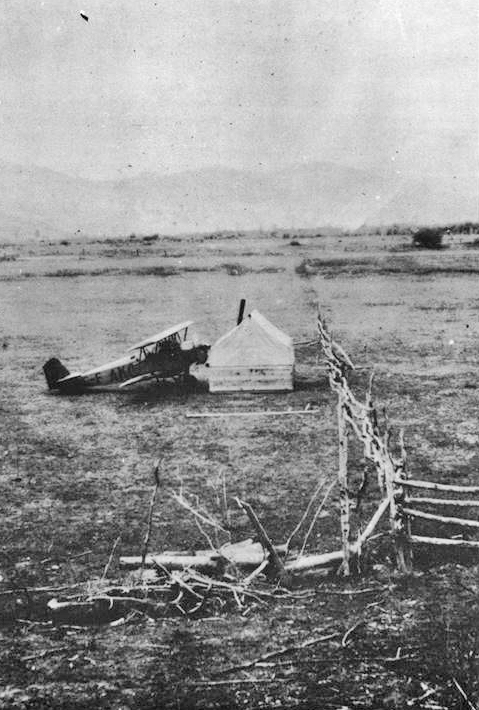 |
.
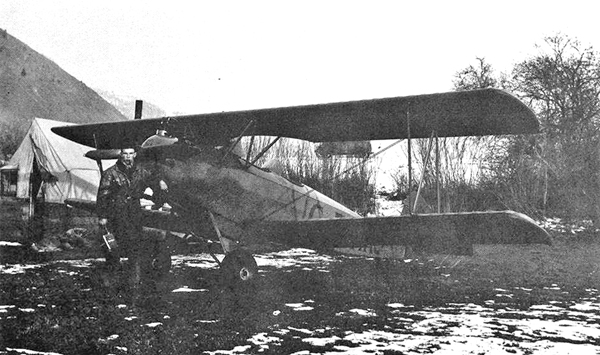
Conditions remained rudimentary at the private St. Paul
Reserve field. Kamloops Air Service had offered
training in a Fleet Model 2 but had to move in 1931 to a
licenced field near Trail. The City�s lack of resources
persisted through to the spring of 1938, when it finally
was able to purchase a suitable 45 acre site from BC
Fruitlands to the west of the City. A grant was later
secured from the federal government to upgrade the field
and pave the runway.
|
Back to top of
page
Return to
map
The airport was now ready to
host the kind of events other communities had enjoyed:
an informal fly-in in 1938, and, for its grand official
opening, an airshow in 1939, featuring a variety of
aircraft including this Stinson SR Reliant.
|
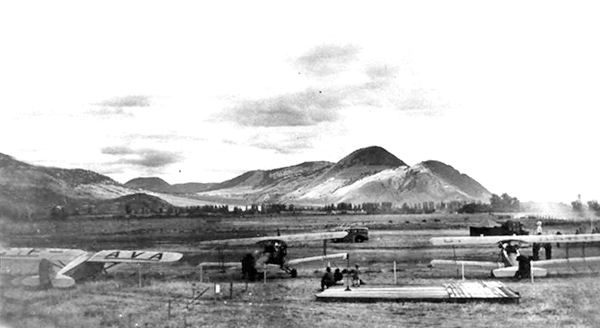 |
|
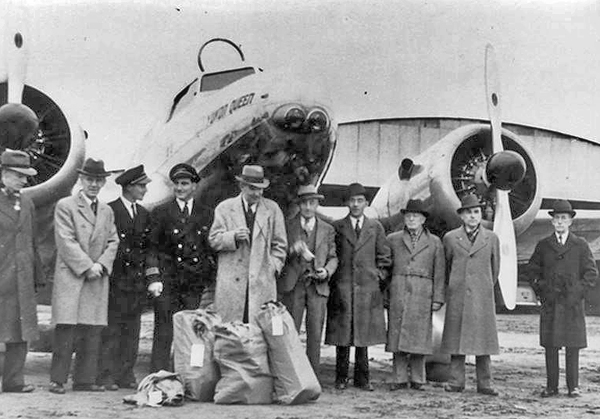
|
1939 also saw the
inauguration of air mail service from Kamloops to Prince
George and Whitehorse by Yukon Southern Air Transport�s
Barclay-Grow aircraft.
|
Between 1939 and 1945 the
airport was further developed by the RCAF as an
alternate aerodrome and staging point for north-south
aircraft movements in support of the US Army Air Force�s
lend/lease program with Russia. The runway was extended
to 5200 feet and taxiways and buildings constructed.
The detachment at Number 16 Staging Unit at one point
consisted of more than 100 people. This aerial photo
shows the airport and City in the background as it was
shortly after the end of the war.
Back to top of
page
Return to
home page |
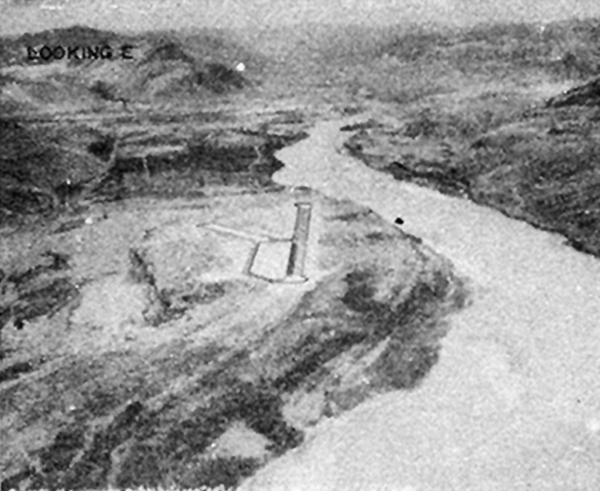
. |
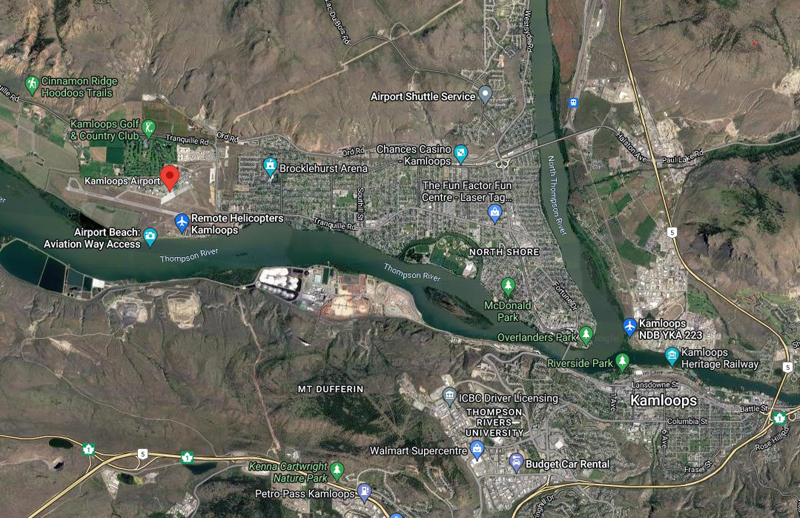
. |
In the period since then, the
airport has been significantly upgraded and expanded. The
federal Department of Transport began an expansion and
improvement program in 1961. Further development started in
1982, including expansion of the terminals and runways.
Major upgrades of airside facilities and the terminal funded
by federal and provincial governments and by the airport
itself were completed by 2009.
Back to top of
page
Return to
map
|
|
The
airfield currently is host to a flying school, the
Kamloops Flying Club, several helicopter operators
and the Kamloops District Wildfire Coordination
Centre. As of November 2022, the airport is served
by scheduled flights with Air Canada, WestJet,
Central Mountain Air and Pacific Coastal Airlines.
Kamloops Water Aerodrome (CAH7) is located on the
Thompson River adjacent to Kamloops airport.
Photos courtesy
Chris Weicht except for final aerial view courtesy Google Maps.
 �
British Columbia Aviation Museum Updated:
2023-01-16 �
British Columbia Aviation Museum Updated:
2023-01-16
|